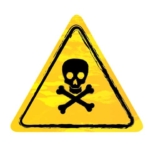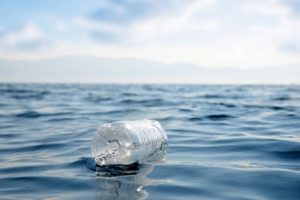There is a new breed of chemicals polluting and endangering our drinking water called PFAS. These highly toxic chemicals have earned the name “forever chemicals” due to their nearly indestructible chemical bonds. Research shows PFAS are increasing at alarming rates in drinking waters across the globe, from the Arctic to the Caribbean. Current scientific research shows that drinking water contaminated with PFAS can have harmful and even fatal health effects. We do not yet know the full impact PFAS will have on the environment and human health.
What are these chemicals? Where do they come from? And most importantly, how do you know if your drinking water is contaminated with these hazardous PFAS?
What Are PFAS, And Where Do PFAS Come From?
Ironically, the problem started by trying to fix another troubling environmental issue. In 1987 The Montreal Protocol was initiated as a plan for several countries to phase out chemicals destroying the Earth’s ozone layer. These chemicals, known as chlorofluorocarbons (CFCs), were invented in the mid-1900s and used in many materials and products, including non-stick coated cookware, waterproofing, anti-stick coating for shoes, and stain-proofing for carpet or furniture.
The chemicals replacing CFCs are hydrochlorofluorocarbons (HCFCs) and hydrofluorocarbons (HFCs). They are manufactured chemicals made from carbon and fluorine molecules. These chemicals rise into the atmosphere and react with other chemicals that form perfluoroalkyl carboxylic acids (PFAS), also known as forever chemicals. The carbon and fluorine bond is so strong that scientists cannot estimate the PFAS half-life. The half-life would be the time it takes for 50% of the chemical to disappear or be excreted.
These “forever chemical” contaminants are scientifically known as perfluoroalkyl and poly-fluoroalkyl or PFAS, and they are being discovered and building up in the environment, groundwater, and drinking water worldwide, even in remote areas of the Arctic. The Arctic was considered a pure, untouched frozen land, but recent studies show a different picture. The World Wildlife Fund has now deemed the Artic “the chemical sink of the globe.”

When these PFAS form, they create one of the strongest chemical bonds, and there are no real known environmental processes that break them down. The bond makes them a complex persistent set of forever chemicals. Unlike other substances, once these chemicals enter the body, they do not break down; instead, they persist and accumulate over time. A recent study from the non-profit advocacy organization – the Environmental Working Group (EWG) – reveals that most American drinking water likely contains these “forever chemicals.
Where Will You Find PFAS?
PFAS have become an everyday use in manufacturing and in a vast array of products. There are over 9,000 known PFAS compounds, and the EWG reports that at least 600 are commonly used in the United States in countless products ranging from carpet treatments, cosmetics, firefighting foam, dental floss, and cookware. One area of great concern is the use of these chemicals in food liners, wrappers, and packaging, causing even further exposure through ingestion of contaminated food and drinks. Scientific studies link PFAS to a growing list of health concerns, including cancer. A senior staff member at EWG recently stated that widespread PFAS pollution is a public health emergency.

A 2020 published scientific report from EWG estimated from U.S. State water testing data that over 200 million people in the United States might have PFAS in their drinking water. The report gives an example of an acceptable PFAS level being the equivalent of one drop of PFAS chemical in 500 barrels of drinking water. It also tells of eye-opening CDC (Center For Disease Control) research showing these forever chemicals appear in the blood of 98% of surveyed Americans.
In 2016, a non-binding health advisory of 70 parts per trillion was set for two specific and widely used PFAS – PFOA and PFOS in drinking water. PFAS is an emerging contaminant, but the Environmental Protection Agency has not regulated these chemicals. The Agency is currently working to produce federal regulations. Unfortunately, the number of PFAS far outweighs the number that the EPA is working to regulate, and replacing one chemical for another does not seem to be helping in reducing harmful contaminants.
Interestingly, the state of Michigan has set some of the country’s most stringent regulations on seven PFAS chemicals. The State of Michigan has dramatically increased its focus on safe drinking water since the 2014 Flint Lead contamination crisis.
Several countries are studying, proposing, and developing safe drinking water guidelines for PFAS. Still, it is a slow and challenging process with the development of thousands of these new chemicals worldwide. The European Union has also set limits for certain PFAS.
Canada has also established limits for the Maximum Acceptable Concentration or MAC for PFOA and PFOS in drinking water. However, drinking water, preparing food, or infant formula with PFAS water levels that exceed the MAC (Maximum Acceptable Concentration) poses substantial harmful health risks according to the Canadian guidelines.
However, according to the Canadian guidelines, showering, bathing, washing dishes, brushing teeth, and washing laundry does not pose the same adverse health risks as tainted drinking water. Although the PFAS remains in the water, it does not appear that these chemicals are as easily absorbed via the skin or inhalation. Still, with thousands of these unstudied chemicals, they should be used with caution until further research is available.
It is challenging for water treatment facilities to remove the growing number of PFAS from the municipal water supply, making drinking water contamination a steadily increasing concern. An alarming and sobering fact; is that PFAS have been found in blood samples of both humans and wildlife, as well as in breast milk samples worldwide.
Health Hazards Associated With PFAS

“Forever chemicals” present such vital health concerns because they are bioaccumulative. This means they are absorbed faster than the body can excrete them, and they build up over time. The accumulation of these chemicals leads to increased and serious health issues.
The Lead Toxicologist and director of the National Institute of Environmental Health Sciences and National Toxicological Program advises that PFAS produces a plethora of concerning health issues. The studies have established links to PFAS, including:
- Testicular, kidney, prostate, and ovarian cancers.
- Ulcerative Colitis, High Cholesterol, Pregnancy-induced hypertension, Thyroid disruption, Hypertension, Hormone changes, Liver obesity, Immunotoxicity, Low Birthweight and size, Delayed puberty, decreased fertility, Reduced testosterone, and changes in bone density.
- Liver and kidney damage

The EPA also highlights studies linking further adverse health effects from prolonged exposure to even small amounts of PFAS, including:
- Reduced ability of the immune system to fight infection and may decrease vaccine response
- Developmental delays and defects in children
- Children are at a higher risk of harmful health effects due to their size and increased accumulation with each exposure.
- Infants are also at greater risk due to repeated prolonged exposure from drinking formula made from tap water and tainted mother’s breast milk, which may also cause exposure in vitro.
With over 9,000 known PFAS and only a few most common ones being studied, it clearly highlights the urgent need for proper safety data and testing. It also shows how imperative it is to have pure, safe drinking water in your home.
First, start by consulting a professional water treatment specialist who will test your water and determine if your water contains PFAS and the best water treatment system options for your water type.
Essential Facts about Finding PFAS in Your Water

PFAS persists in water for an extremely long time and can travel long distances, which causes further spread and contamination. Many countries studying PFAS are discovering concerning levels in the water, even in remote areas such as the Arctic. Consider this startling and sobering fact, if we could eliminate all PFAS emissions today, humans and wildlife would still be exposed to these PFAS chemicals for decades due to their inability to break down.
The 2019 film Dark Waters stars the famous Hollywood actor Mark Ruffalo (Marvel’s The Hulk). The film tells the real-life story of a tenacious attorney that uncovers a dark secret that connects a growing number of unexplained deaths to one of the world’s largest chemical companies. It starts in a small town in West Virginia where farm animals are mysteriously dying of unusual medical conditions. They connect the deaths of the farm animals and the many vast illnesses of the town residents to the local chemical plant that has been knowingly dumping thousands of tons of PFOA, a forever chemical, into the local landfill polluting the local farmland and groundwater.
A 20-year legal battle ensued, resulting in a $670,000,000 settlement to care for and monitor the residents and the more than 3,500 diseases they experienced from the toxic PFAS. It brought significant attention to the development and misuse of the growing number of these “forever chemicals.”
Although municipalities provide water treatment to improve chemical levels, they do not produce pure drinking water. So it is essential to safeguard your drinking water from these “forever chemicals” and consult a professional water treatment expert to provide the most current and advanced purifying water treatment options. They can recommend high-quality systems backed by industry standards such as NSF/ANSI American National Standards Institute, which certifies material safety and product performance.
Some essential facts about PFAS:
- Do not try boiling water to get rid of PFAS; it only makes the chemical more concentrated.
- Studies show several bottled water brands have tested positive for PFAS, so buying bottled water does not guarantee “forever chemical “-free water.
- As with other known harmful contaminants, PFAS are not removed using a countertop pitcher such as a Brita filter.
How To Purify Your Water From PFAS

A Whole Home Reverse Osmosis Water Filtration System remarkably removes over 99% of the PFAS or “forever chemicals” along with other chemicals, heavy metals, bacteria, viruses, and many other contaminants. Reverse Osmosis is known as a microfiltration system due to micro-sized pores in the membrane that are highly effective at removing PFAS and so many other pollutants.
Reverse Osmosis Filtration Systems uses a semi-permeable membrane to filter out the PFAS contaminants while the clean, pure water quickly passes through to supply your home’s drinking water. The reverse osmosis membrane is designed to remove a wide variety of chemicals and pollutants that create health-related and aesthetic issues. The PFAS chemicals and other filtered pollutants are flushed out to the drain leaving only pure, safe, crystal clear drinking water. Adding a Reverse Osmosis System to your home will provide peace of mind knowing that your drinking water is protected from these dangerous PFAS and many other harmful contaminants.
For more information about Excalibur Reverse Osmosis or Whole Home Filtration Systems, please contact us.


